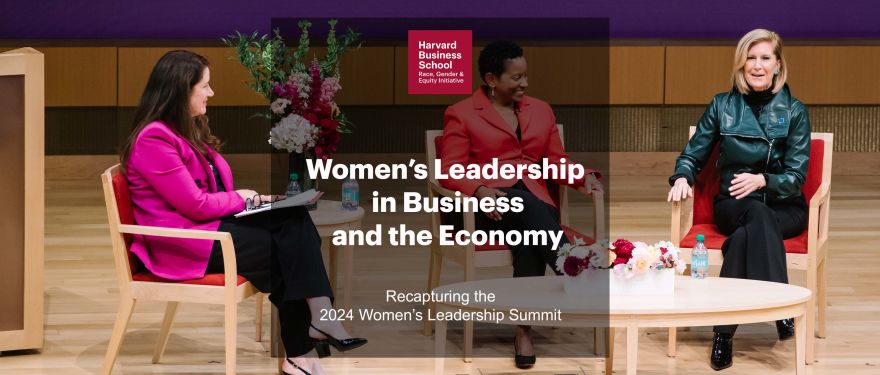Race, Gender and Equity at Work
Race, Gender and Equity at Work
The Board Diversity Network, a program of the HBS Race, Gender & Equity Initiative, shares the latest research, insights, and HBS alumni perspectives on diversity in the boardroom.
We know that diversity improves a team’s collective intelligence and decision-making. But what exactly happens when a corporate board becomes more diverse? Is there a difference between when a board becomes **significantly** more diverse versus only slightly more diverse? What does it take for a board to leverage the much-needed guidance and expertise of new members? Read on for more on the link between board leadership diversity and performance. [...]
In early November, an intergenerational assembly of remarkable women convened at Harvard Business School’s campus for the HBS Women’s Leadership Summit. The two-day gathering drew out insights from alumnae who are at the forefront of today’s most cutting-edge industries. The event was bookended by panels on women’s leadership in technology and finance. [...]
This fall, HBS welcomed several generations of alumnae back to campus for the Women’s Leadership Summit. The closing panel for this exciting event brought two leaders together to shed insight on the bedrock of business and economy: money. [...]
Professor Onyeador examines topics surrounding social cohesion, particularly conflict as it relates to racial dynamics. Her research is particularly timely given the politicized conversations around discrimination in hiring and the emotional well-being of minorities at work. Her recent scholarship peels back the veil on how we connect across cultural barriers and can help us foster positive employee dynamics to soothe discord. [...]
When it comes to how diverse corporate boards are today and where the trend is going, the numbers are either heartening or discouraging – depending on your viewpoint.
The proportion of women grew from 19 percent in 2015 to 31 percent in 2022, according to recruiting(check) firm Heidrick & Struggles’ “Board Monitor US 2023.” However, that progress has slowed in recent years and has accrued mostly to the benefit of white women.
The proportion of Black directors has nearly doubled since 2015, to 17 percent in 2022. A surge of enthusiasm prompted by the Black Lives Matter movement had increased that percentage to 28 percent in 2020, but it has waned since then. [...]
Load More Loading...





